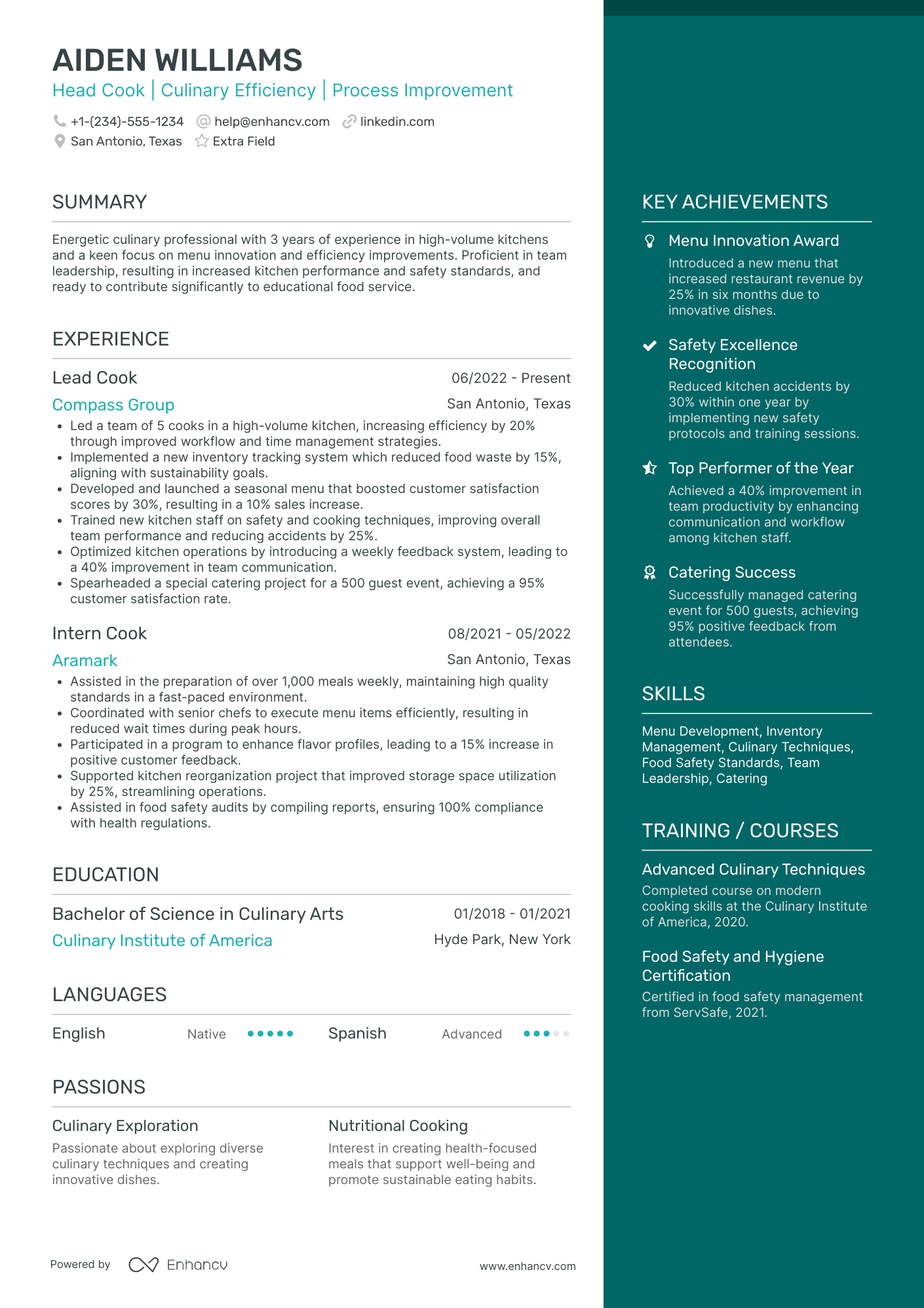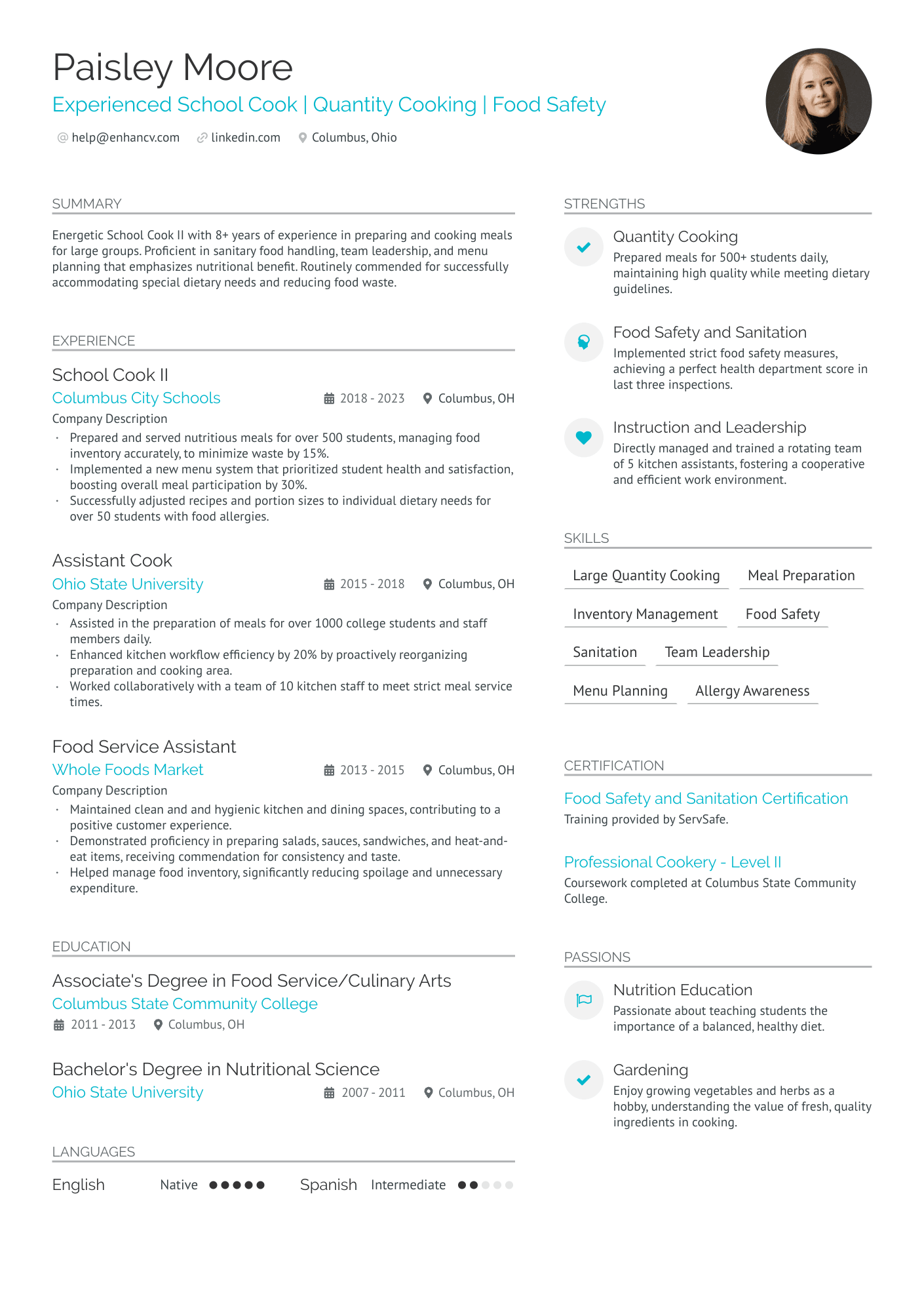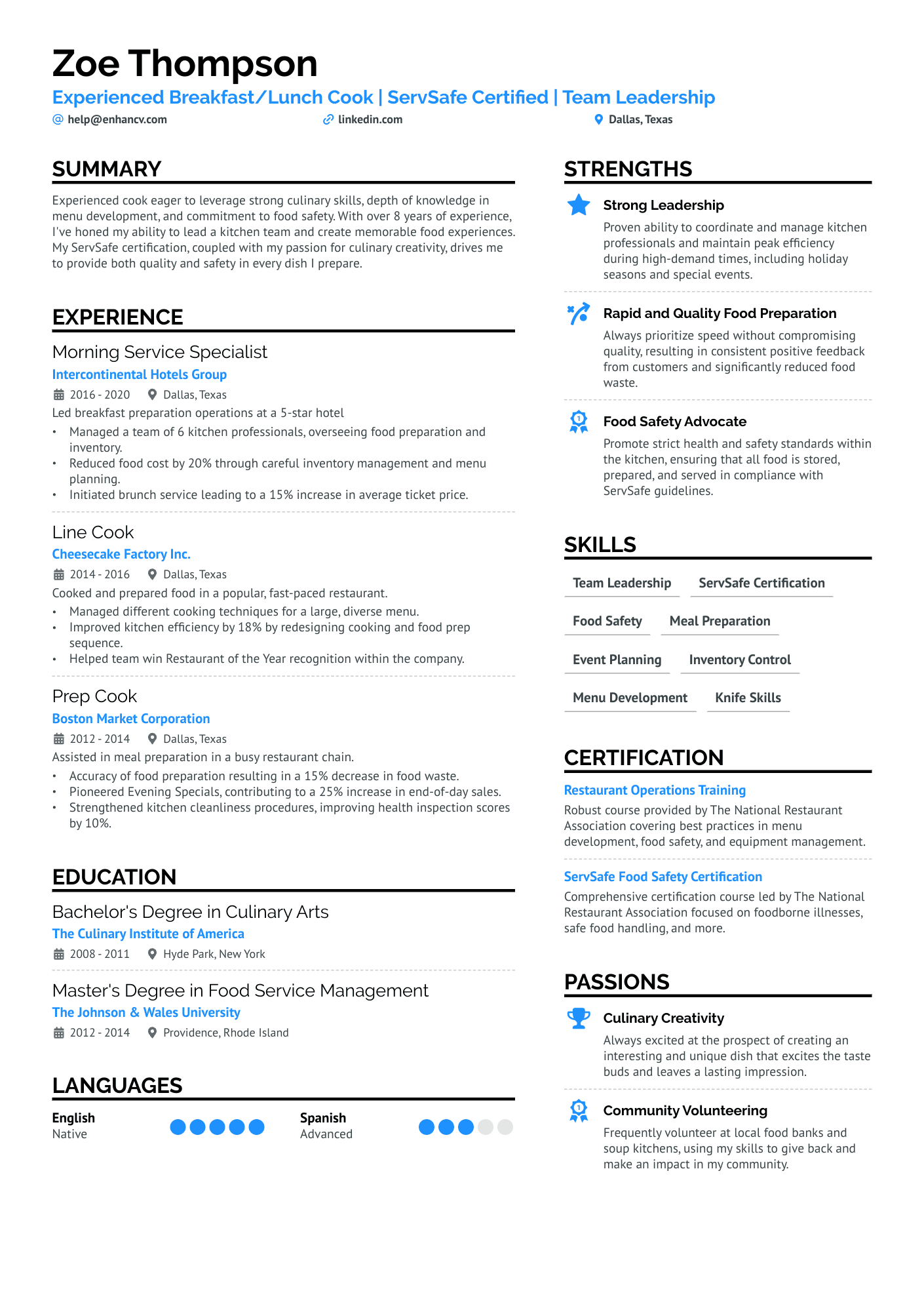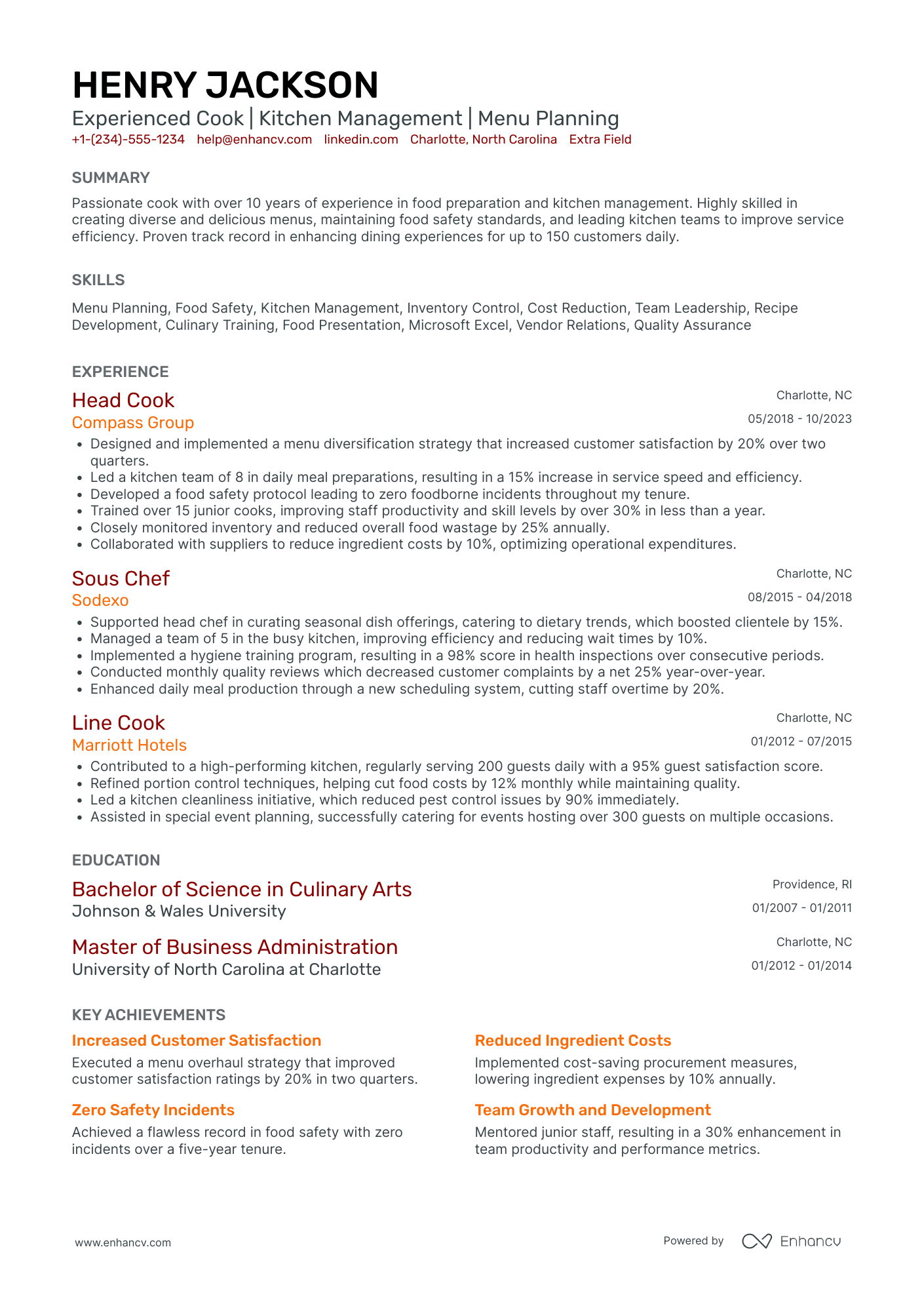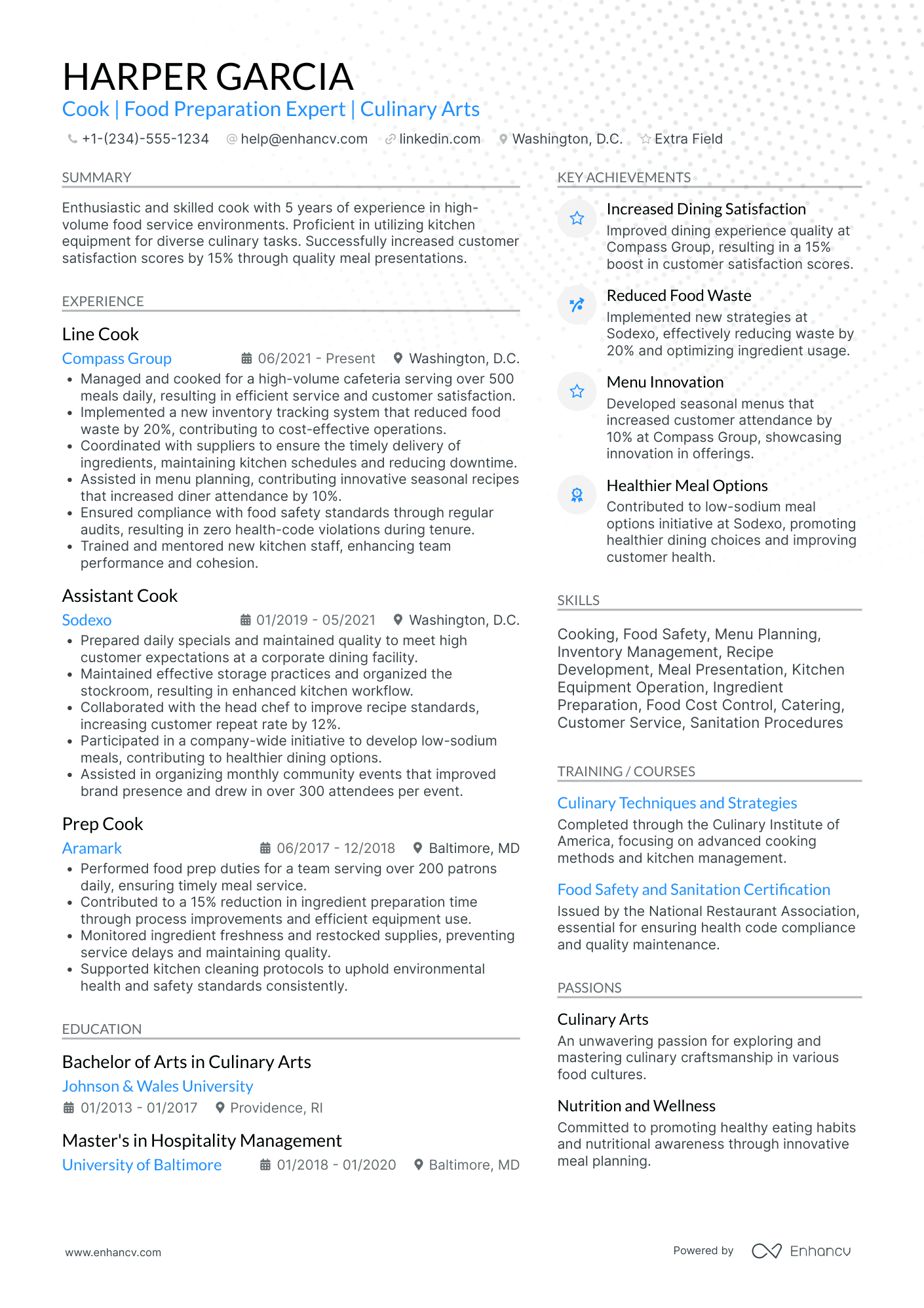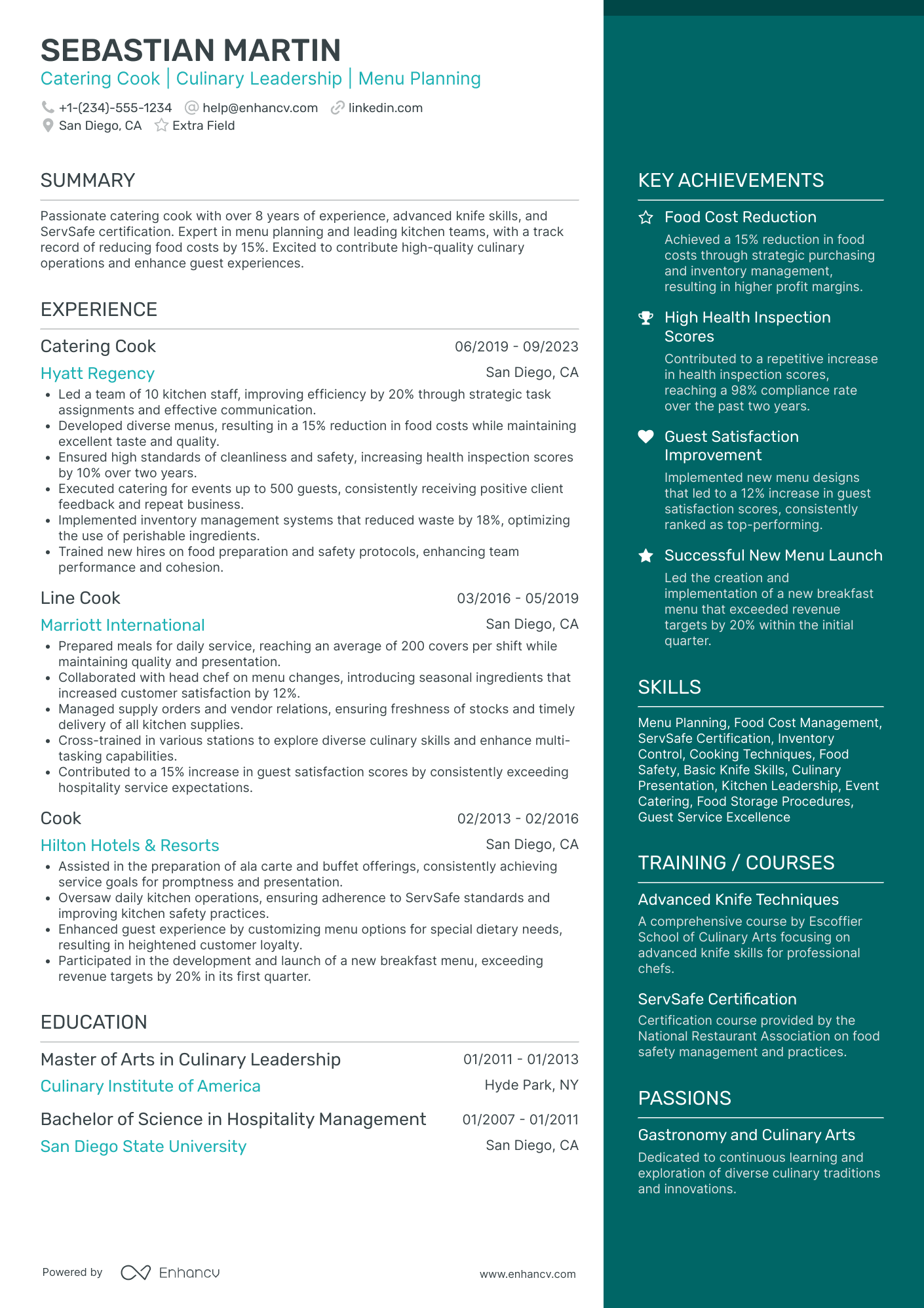Cook may struggle with effectively highlighting relevant culinary skills on a resume. Our resume examples can demonstrate how to showcase these abilities in a way that stands out to potential employers. Dive into the examples below to see this approach in action.
Cook resume examples
By Experience
By Role


